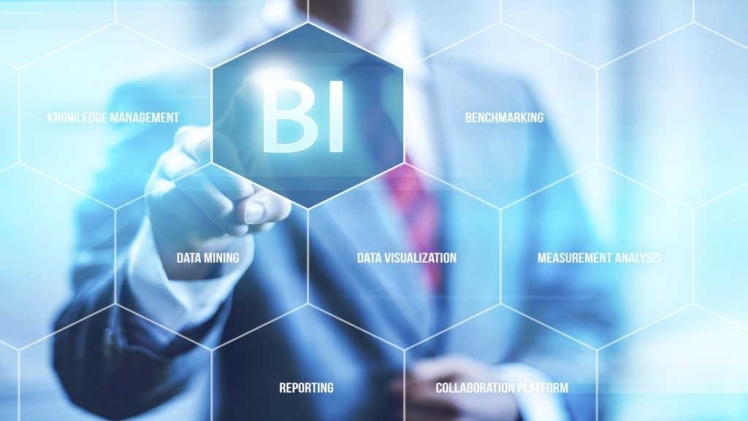In the age of data, information is power. The ability to gather, process, and analyze data is a competitive advantage that can drive business success. Business Intelligence (BI) and Analytics are the key to unlocking this potential, and at the heart of these processes lies data visualization. Data visualization companies play a pivotal role in translating raw data into actionable insights, empowering organizations to make informed decisions. In this article, we will explore the significance of data visualization, the role of data visualization companies in BI and Analytics, and the top players in this industry.
The Power of Data Visualization
Data visualization is the presentation of data in a graphical or pictorial format that makes complex information more understandable and accessible. Here’s why it’s essential:
- Clarity and Understanding: Data visualization simplifies complex data sets, enabling users to understand trends, patterns, and outliers at a glance.
- Quick Decision-Making: Visualizations allow for faster data analysis and decision-making. Visual data is more memorable and digestible than text or numbers.
- Identification of Insights: Visuals can reveal insights and correlations that might not be immediately apparent in raw data.
- Storytelling: Effective data visualization tells a story, making it easier to convey information and persuade stakeholders.
The Role of Data Visualization Companies
Data visualization is more than just creating pretty charts; it’s a science and an art. Data visualization companies are the experts in this field. Here’s how they contribute to BI and Analytics:
- Custom Visualizations:
– Data visualization companies create custom visualizations tailored to the specific needs of an organization. This ensures that data is presented in the most informative and impactful way.
- Integration:
– They integrate data visualization tools and dashboards with existing data systems and BI platforms, allowing organizations to visualize data from multiple sources.
- Interactivity:
– Interactive dashboards enable users to manipulate data, drill down into details, and explore trends. Data visualization companies build these interactive features.
- Data Insights:
– Data visualization experts help organizations uncover insights from data by presenting it in ways that highlight trends, anomalies, and correlations.
- Scalability:
– They ensure that data visualization solutions are scalable to accommodate the growing volumes of data that organizations collect.
- Compliance and Security:
– Data visualization companies understand the importance of data security and compliance. They implement measures to protect sensitive data when creating visualizations.
The Impact of Data Visualization in Business Intelligence
Business Intelligence relies heavily on data visualization for its effectiveness. Data visualization companies support BI in the following ways:
- Dashboard Creation:
– Data visualization companies design dashboards that provide real-time insights. These dashboards are customizable and user-friendly.
- Reporting:
– They enable organizations to generate reports that can be easily shared with stakeholders, offering clear, visual insights into the business’s performance.
- Data Exploration:
– Data visualization allows users to explore data and identify patterns or trends, making it an essential tool for proactive decision-making.
- Data Storytelling:
– Data visualization is not just about charts; it’s about telling a compelling data story. This story can help convey insights to non-technical stakeholders effectively.
The Role of Data Visualization in Analytics
Analytics is about extracting insights from data to drive strategic decision-making. Data visualization companies enhance analytics in the following ways:
- Visual Data Exploration:
– They create visualizations that allow analysts to explore data visually, speeding up the data discovery process.
- Predictive Analytics:
– Visualizations make it easier to understand predictive models and their results, helping organizations harness the power of analytics.
- Data Transparency:
– Visualizations provide transparency into the analytics process, helping organizations understand how conclusions are reached.
- Visual Storytelling:
– Data visualization companies transform analytics results into compelling visual stories, ensuring that insights are understood and acted upon.
Leading Data Visualization Companies
The world of data visualization is populated by companies known for their expertise and innovation. Here are some of the top players:
- Tableau:
– Tableau is renowned for its powerful and intuitive data visualization tools that cater to various industries and needs.
- QlikView:
– QlikView offers end-to-end data management and analytics solutions with robust visualization capabilities.
- Power BI:
– Microsoft’s Power BI delivers a suite of data visualization tools for users to explore data, create insightful reports, and share them across the organization.
- Domo:
– Domo specializes in cloud-based data visualization, making data accessible and understandable for all users.
- Looker:
– Looker, now part of Google Cloud, is a data exploration and business intelligence platform that provides customizable data visualizations.
The Impact of Artificial Intelligence in Data Visualization Companies
The world of data visualization has undergone a significant transformation with the integration of artificial intelligence (AI). AI, a technology that enables machines to simulate human intelligence and perform tasks that typically require human cognition, is revolutionizing how data is analyzed and presented. Data visualization companies are at the forefront of this AI revolution, leveraging its capabilities to offer more powerful, intuitive, and insightful data visualization solutions. In this article, we will explore the impact of artificial intelligence in data visualization companies, focusing on how it enhances data representation, interactivity, and decision-making.
AI-Enhanced Data Representation
- Automated Insights:
– AI can automatically generate insights from data, providing users with immediate, actionable information. Data visualization companies integrate AI algorithms to identify trends, outliers, and significant data points.
- Advanced Pattern Recognition:
– AI-powered data visualization can recognize complex patterns and correlations in data that might be challenging for human analysts to discern. This aids in more accurate and nuanced data representation.
- Dynamic Visualizations:
– AI enables dynamic, real-time updates to visualizations. Data is continuously analyzed and represented, ensuring that users are always working with the latest information.
- Enhanced Interactivity with AI
- Predictive Analytics:
– AI algorithms predict future data trends, allowing users to interact with visualizations to explore possible scenarios and make data-informed decisions.
- Natural Language Processing (NLP):
– AI-driven data visualization can respond to natural language queries, making it easier for users to interact with the data, ask questions, and receive visual answers.
- Personalization:
– AI can customize data visualizations based on user preferences and behavior, tailoring the experience to individual needs.
AI-Driven Decision-Making
- Cognitive Automation:
– AI automates decision-making processes by analyzing data and providing recommendations or alerts when predefined conditions are met.
- Augmented Analytics:
– AI augments human decision-making by offering suggestions based on data insights, helping users make more informed choices.
- Anomaly Detection:
– AI algorithms can identify anomalies in data visualizations, alerting users to irregular patterns or unexpected deviations.
Leading Data Visualization Companies Utilizing AI
Several data visualization companies have embraced AI to enhance their offerings:
- Tableau:
– Tableau’s AI-powered features include Explain Data, which automatically uncovers insights from data, and Ask Data, enabling natural language querying.
- Qlik:
– Qlik incorporates AI into its platform with features like Insight Advisor, which provides AI-generated insights and suggests data associations.
- Microsoft Power BI:
– Power BI leverages AI for features such as Quick Insights, which automatically identifies patterns and anomalies in data, and the AI-powered visuals.
- Looker:
– Looker uses AI to create a more personalized data experience for users, providing them with relevant data insights and suggesting actions based on AI analysis.
AI and the Future of Data Visualization Companies
The impact of AI on data visualization is just beginning. As AI technologies continue to evolve, artificial intelligence development companies will play a pivotal role in harnessing the full potential of AI. Some future developments may include:
- Enhanced Predictive Capabilities:
– AI will become more adept at forecasting and offering predictive insights, empowering users to anticipate future trends and outcomes.
- Improved Natural Language Processing:
– The integration of AI-driven NLP will enable even more natural and conversational interactions with data.
- AI-Driven Automation:
– Data visualization will become increasingly automated, with AI handling tasks like report generation and alerting, allowing users to focus on decision-making.
Conclusion
Data visualization is the bridge that connects raw data to actionable insights in the realms of Business Intelligence and Analytics. Data visualization companies are the architects of this bridge, helping organizations unlock the power of their data.
In a data-driven world, the ability to effectively communicate data insights is a strategic advantage that can’t be understated. As organizations continue to accumulate vast amounts of data, the role of data visualization companies will become increasingly critical in guiding business decisions, promoting data literacy, and enabling agile, data-informed strategies. By choosing the right data visualization partner, organizations can gain a competitive edge in this data-rich landscape and chart a course toward success.





